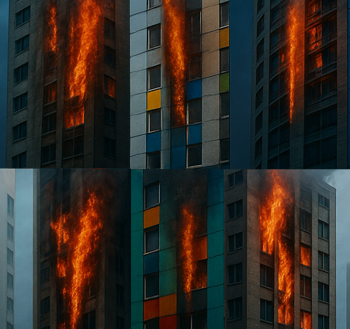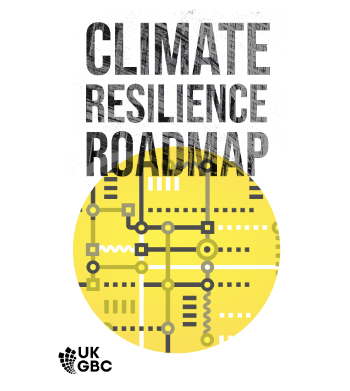Flame retardant
Contents |
[edit] Introduction
Flame retardant is a term used to describe an action. The term is not applied to a specific chemical (or group of chemicals) since there are many different types of flame retardant used on different manufactured materials to prevent or slow the spread of flames caused by fire.
See Fire suppression.
These treatments are typically added to plastics, textiles, foams, insulation, electronics, timber and so on as finishes and coatings. They are activated by a source of ignition such as a spark. They stop sparks from becoming larger fires by launching a physical or chemical reaction that controls the spread of flames. Ideally, this reduces the chances of a fire starting or delays its spread.
[edit] History
The earliest officially patented form of flame retardant was developed by Obadiah (sometimes referred to as Obadjah) Wyld in 1735. The British inventor mixed alum, ferrous sulfate and borax to create a treatment for fabrics and paper that would prevent the spread of flames.
More effective flame retardants were introduced in the 19th century by Joseph Louis Gay-Lussac, a French chemist who made a number of discoveries based on the idea of temperature and its relationship to gas pressure (Gay-Lussac’s Law or Amontons's law). His use of ammonium phosphate, ammonium chloride and borax as flame retardants was groundbreaking, and his formulation using borates is still the basis for modern treatments.
Advances in the 20th century brought about significant changes in the textile industry with the introduction of synthetic fibres - some with inherent flame or fire resistance characteristics.
Modern flame retardants are manufactured as liquids or solids.They are designed to:
- Prevent or slow the full ignition of a fire.
- Impede combustion.
- Trigger a self-extinguishing reaction.
[edit] Reactive and additive
Flame retardants can be chemically transformed to create a new fire resistant material (reactive) or physically incorporated into a material (additive).
By incorporating a reactive flame retardant into a material through a chemical reaction, the retardant becomes a new material that is inherently protected against fire. It is no longer a separate material and is permanently part of the material it has been used to treat.
In the case of additive flame retardants, these materials are physically mixed into the materials they are used to treat, these are often referred to as fire retardant additives or FRAs. The FRA inhibits the early stages of fire development, as such the classification of such a material with the FRA included is often better, such as Euroclass E.
[edit] Flame retardant classifications
The most common flame retardant classes include:
- Halogenated (compounds that include a halogen such as chlorine, bromine, fluorine).
- Phosphorous-based.
- Nitrogen-based.
- Inorganic and mineral compounds.
[edit] Fire retardant or flame retardant?
Modern fire retardants and flame retardants have similar purposes - to control fires - but they achieve this by different methods:
Flame retardants are chemicals that are usually applied to combustible materials.
Fire retardants can also be used on surfaces, but they are primarily extinguishers that absorb a great deal of heat to cool whatever has been treated. Other agents can react with the heat to put out the fire by releasing water vapour or carbon dioxide through a process called dilution.
Other fire retardants are intumescent coatings that rely on substances that will expand through a chemical reaction when heated to protect the materials that have been coated.
[edit] Health and safety controversies
The early flame retardants, polychlorinated biphenyls (PCBs), are considered toxic and have been banned in many parts of the world. Manufacturers switched to other types of flame retardants, but these have also raised concerns with regard to handling during the production process (or other high exposure levels) and environmentally safe end of life procedures.
[edit] Related articles on Designing Buildings Wiki
- Fire extinguisher.
- Fire retardant.
- Fire suppression.
- Flammable building materials.
- Halogenated flame retardants.
- Material of limited combustibility.
- Non-combustible material.
- Polycarbonate plastic.
- Wood and insulation.
[edit] External resources
Featured articles and news
Government consultations for the summer of 2025
A year of Labour, past and present consultations on the environment, the built environment, training and tax.
CMA competitiveness probe of major housing developers
100 million affordable housing contributions committed with further consultation published.
Homes England supports Greencore Homes
42 new build affordable sustainable homes in Oxfordshire.
Zero carbon social housing: unlocking brownfield potential
Seven ZEDpod strategies for brownfield housing success.
CIOB report; a blueprint for SDGs and the built environment
Pairing the Sustainable Development Goals with projects.
Types, tests, standards and fires relating to external cladding
Brief descriptions with an extensive list of fires for review.
Latest Build UK Building Safety Regime explainer published
Key elements in one short, now updated document.
UKGBC launch the UK Climate Resilience Roadmap
First guidance of its kind on direct climate impacts for the built environment and how it can adapt.
CLC Health, Safety and Wellbeing Strategy 2025
Launched by the Minister for Industry to look at fatalities on site, improving mental health and other issues.
One of the most impressive Victorian architects. Book review.
Common Assessment Standard now with building safety
New CAS update now includes mandatory building safety questions.
RTPI leader to become new CIOB Chief Executive Officer
Dr Victoria Hills MRTPI, FICE to take over after Caroline Gumble’s departure.
Social and affordable housing, a long term plan for delivery
The “Delivering a Decade of Renewal for Social and Affordable Housing” strategy sets out future path.
A change to adoptive architecture
Effects of global weather warming on architectural detailing, material choice and human interaction.
The proposed publicly owned and backed subsidiary of Homes England, to facilitate new homes.
How big is the problem and what can we do to mitigate the effects?
Overheating guidance and tools for building designers
A number of cool guides to help with the heat.
The UK's Modern Industrial Strategy: A 10 year plan
Previous consultation criticism, current key elements and general support with some persisting reservations.
Building Safety Regulator reforms
New roles, new staff and a new fast track service pave the way for a single construction regulator.


























Comments
This article may understate the extent of Health and Safety controversy about flame retardants. It does not make clear the inevitable trade-off between making fire ignition less likely (and so hopefully having fewer fires), and making toxic smoke in a developed fire more likely (and so increasing the health risks in fires that do occur).
https://publications.parliament.uk/pa/cm201719/cmselect/cmenvaud/1805/180506.htm
https://www.bbc.co.uk/news/uk-49000966